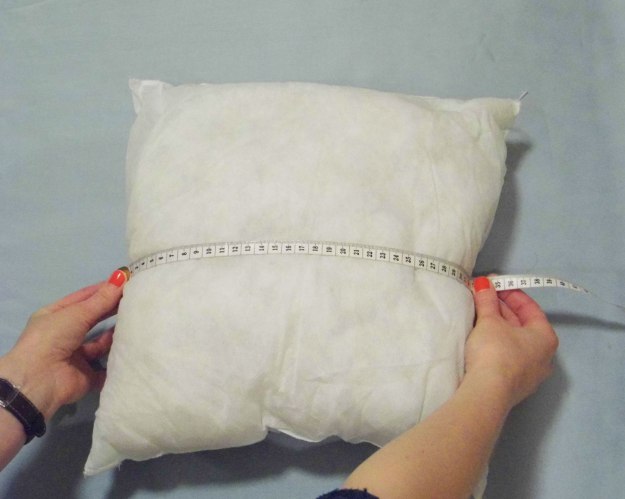Today I’m going to show you how to make a reverse applique cushion cover (and, of course, you could then reserve applique anything you want!). Reverse applique is kinda what it says on the tin – you have 2 different fabrics, but the one that would be on the top in normal applique is underneath and the top fabric is cut away to reveal it.
I already had a cushion pad in need of a cover as I bought a bunch when I bought the pad for my Sarah and Duck cushion. It measured 35cm x 35cm. So my fabric would be 38cm x 38cm, which adds a 1.5cm seam allowance to each side. You could always make the cover first and then buy the pad that fits the size you’ve made – though I would check you can definitely get one in that size before you spend ages making the cover.
The fabrics I used were a blue fat quarter I was given by my aunt and which had been in my stash for a while,
an off-cut of my ugly skirt refashion fabric,
and the left-overs from my yellow skirt gang skirt (which sadly was consigned to the charity shop as I never wore it).
The yellow fabric is the main fabric on both sides, so cut 2 squares of 38cm x 38cm. The biggest square I could squeeze out of the blue and yellow tartan fabric was 20cm x 20cm. This means I placed it 9cm from each edge (38-20/2). Then pin it in place.
Top tip: Use washi tape (or other removable tape to make a new sewing guide for your sewing machine if your seam allowance (in this case 10cm) is bigger than the guides marked on the machine).
Then sew all around the shape – I did this with the ‘back’ facing upwards so I would know I had caught all of the edges and there wouldn’t be any gaps. I also used one of my decorative stitched (D on the second row, below), to make sure it was sewn as securely as possible. Also it looks nice!
This is what it will look like once you’ve sewn all the way around. Remember this is the back view.
Flip your cushion over to the front and pinch only the top fabric in the middle – you should be able to tell when you’ve got both fabrics and when you’ve isolated only the top one.
Then snip a little hole, then use this to cut out the middle of your main fabric up to the stitching – make sure you don’t snip any of the actual stitches!
You will then have this:
So that’s one side done – easy, right?
I decided I wanted my other side to be a circle and not a square. I cut the fat quarter into a square of 38cm x 38cm – if you have a smaller piece of fabric, you don’t have to cut it to the same size as the main fabric.
Find the centre of the squares by folding in diagonally in half twice – push a pin in to mark this spot.
With your pin still making the middle (you can almost make it out in this photo), pin the 2 squares of fabric together.
The trick to sewing a circle is a trusty drawing pin! I decided to sew my circle with a 10cm radius (the distance from the centre to the edge). Measure from the needle to where you want the centre of the circle to be.
Using washi tape (or another removable tape) stick the drawing pin in a straight line from the needle, pin facing upwards.
Push the fabric onto the drawing pin, exactly where you had the pin marking the centre of your fabric – the drawing pin will act as a pivot around which you can sew your (pretty) perfect circle.
Now you’re ready to sew your circle – you’ll find it easier to hold the fabric with the pin between 2 fingers to make sure it pivots evenly around in a circle. I also found it helpful to go slowly and to stop often to even up the tension between the pin and the needle. I, again, used a decorative stitch on my machine.
You should end up with something like this – this is the back as the stitching wasn’t rally visible on the back.
Then repeat the process of pinching the top layer of fabric,
snipping a hole and cutting out the top fabric up to the line of stitching,.
It should look like this:
You then need to sew the 2 side of your cushion together. Pin them right sides facing (i.e. yellow sides together, blue sides on the outside) and sew around 3 sides, leaving the 4th side open to get the cushion pad in.

It will help you to get clean square corners if you snip the excess fabric off like this before you turn it the right way around.

Then turn it right sides out, and hand stitch the open side, tucking the seam allowance inside. Then you should have a lovely new cushion to brighten up a dreary January day!


























Brilliant instructions. Px
LikeLike
Pingback: A Review of 2016